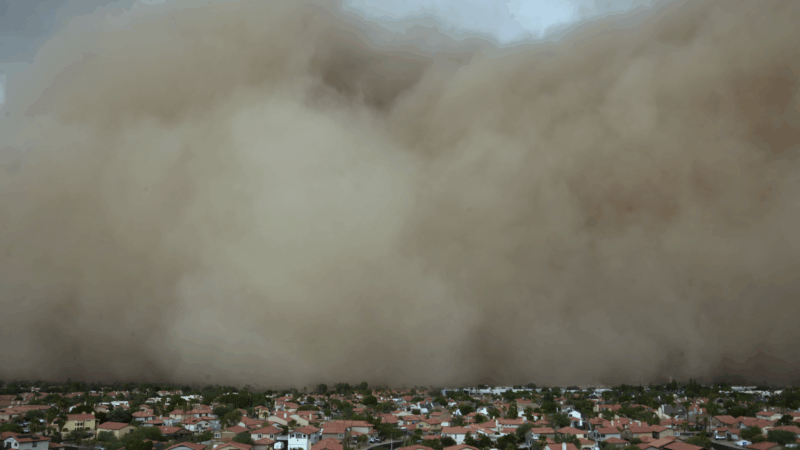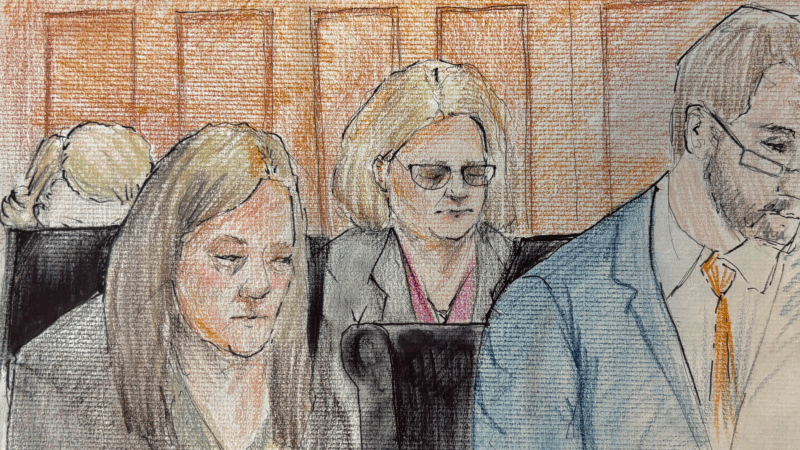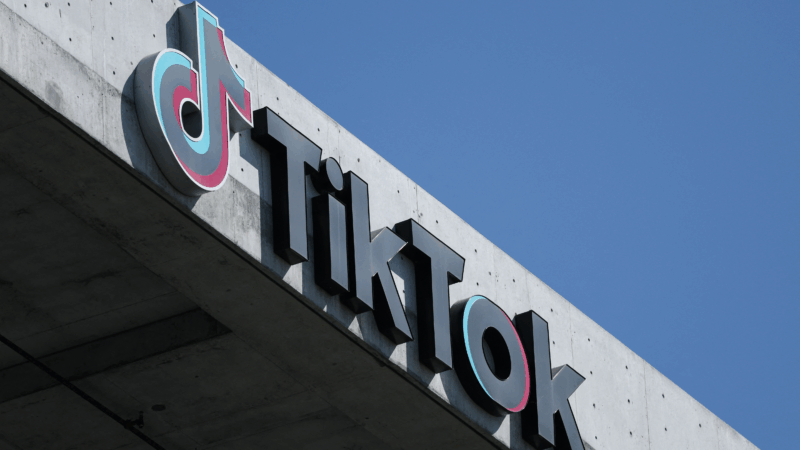A haboob covered central Arizona in dust. But what exactly is it?
Parts of central Arizona were engulfed by a towering wall of dust on Monday evening — producing dramatic scenes that sent shockwaves far beyond the Grand Canyon state.
“ It was larger and it went through a metropolitan area so it gained a lot of attention,” said Mark O’Malley, a meteorologist with the National Weather Service in Phoenix.
According to O’Malley, the dust storm — known as a haboob — originated in southern Arizona around 3:30 p.m. local time and reached the city of Phoenix about two hours later.
The storm gradually weakened as it moved through north-central Arizona and in total, lasted about an hour, O’Malley added.
The haboob was accompanied by intense thunderstorms. On Monday evening, more than 39,000 households in Arizona were without power and the bulk of outages were in Maricopa County, which includes Phoenix, according to NPR member station KJZZ.
The dust storm also reduced visibility to a quarter-mile across the city. The state’s Department of Transportation urged drivers to stay off the road and flights at the Phoenix Sky Harbor International Airport were temporarily grounded, KJZZ reported.
Although images from the haboob may look apocalyptic, dozens of dust storms occur each year in southwestern U.S., according to the National Oceanic and Atmospheric Administration (NOAA).
Here’s what to know.
How do haboobs form?
These dust storms are the result of powerful winds from a thunderstorm. As the storm cell moves, it forces air down and forward, picking up dust and debris along the way, according to NOAA.
The recent haboob that swept through Phoenix also came after a series of severe thunderstorms in the area.
“ That’s how these outflows form is behind thunderstorms and it pushes across the desert and in this case, picked up a lot of dirt and transported it into the Phoenix metro area,” O’Malley said.
The word “haboob” comes from the Arabic word “haab” meaning “wind” or “blow,’ according to NOAA. Haboobs are common in hot and dry regions like the Sahara desert and the Arabian Peninsula.
How dangerous are haboobs?
Wind speeds reaching 60 miles per hour can cause a wall of dust as high as 10,000 feet, NOAA said. But these storms are typically brief, lasting between 10 to 30 minutes.
Still, dust storms have been the cause of dozens of traffic fatalities in the U.S. over the years. In 2023, researchers from NOAA’s Air Resources Laboratory estimated that between 2007 and 2017, there were at least 232 deaths from dust storm-related traffic events.
“We found that dust events caused life losses comparable to events like hurricanes and wildfires in some years,” Daniel Tong, one of the authors of the research paper, said in 2023. “Greater awareness could reduce crashes and possibly save lives.”
A federal jury finds Milwaukee judge guilty of obstructing immigration agents
A jury returns a guilty/not guilty verdict in the case of Hannah Dugan. The Milwaukee judge was accused of allowing an undocumented immigrant defender to evade immigration agents
Suspect in Brown University shooting found dead in New Hampshire
The suspect in the shooting at Brown University Saturday was discovered dead Thursday at a storage facility in New Hampshire.
TikTok signs deal to give U.S. operations to Oracle-led investor group
The agreement aims to resolve a yearslong standoff between the popular social media platform and the U.S. government over national security concerns tied to China's parent company, ByteDance.
A family reunion to commemorate the Montgomery Bus Boycott
This month marked the 70th anniversary of the historic Montgomery Bus Boycott. The demonstration was catalyzed when Rosa Parks refused to give up her seat on a bus. The boycott lasted over a year and is considered a spark of the Civil Rights Movement.
President Trump to add his own name to the Kennedy Center
The arts institution will be called the Trump-Kennedy Center. The president's press secretary said it comes after a unanimous vote by the center's board, which Trump took over earlier this year.
Mangione pre-trial hearing wraps, but judge won’t rule on evidence for months
After three weeks of testimony, a judge will now rule on whether evidence found in Mangione's backpack can be used in his state trial for the murder of UnitedHealthcare CEO Brian Thompson.









